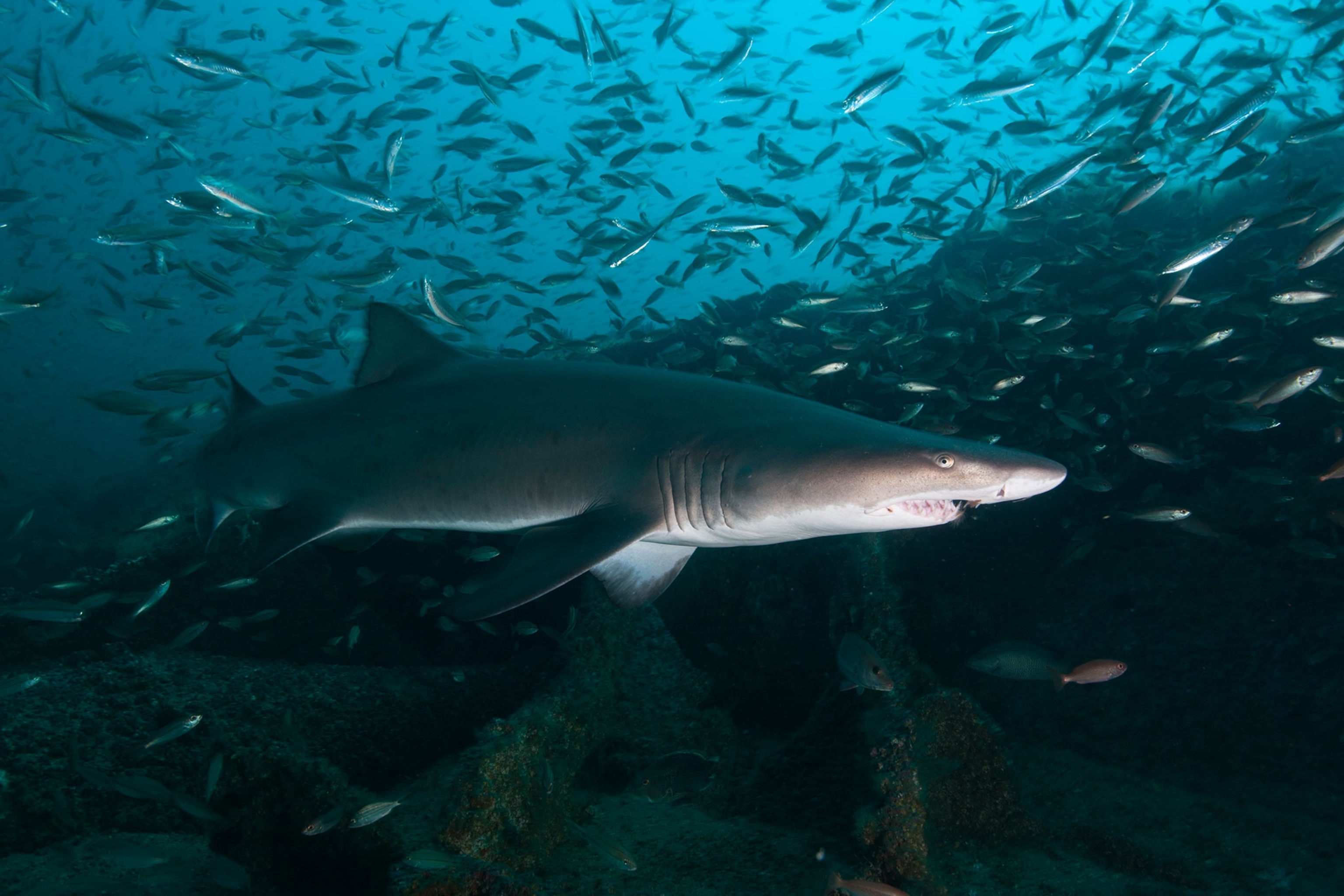
Many Sharks Live a Century—Longer Than Thought
Radioactivity from nuclear bombs has helped reveal lengthy lifespans, a new analysis says.
We humans go to great lengths to appear younger than we are. Sharks, it seems, do it naturally.
About a decade ago, studies began to hint that many sharks have longer lifespans than previously suspected. Now, a new analysis that pulled together data from more than 50 studies suggests a "widespread" underestimation of lifespans among many sharks, rays, and cartilaginous fish. (Explore the interactive: "Sizing Up Sharks, the Lords of the Sea.")
That's because newer methods of aging sharks—such as bomb carbon dating—are proving more accurate than the traditional method of counting the growth bands on vertebrae, says study author Alastair Harry, a fisheries scientist at Australia's James Cook University.
"Scientists were definitely already aware of [age underestimation], but perhaps did not quite realize the magnitude and prevalence of it," Harry says.
The results, published recently in the journal Fish and Fisheries, suggest that many sharks—from great whites to sand tigers to dusty sharks—may roam the oceans for decades longer than believed.
And just last year, scientists found that Greenland sharks, native to cold Arctic waters, might live for centuries. (See "272-Year-Old Shark Is Longest-Lived Vertebrate on Earth.")
The problem, researchers contend, is that aging sharks incorrectly can spell trouble for conservation.
No Bones About It
By reviewing 53 previously studied populations of sharks, Harry revealed that the ages of 30 percent of those populations are underestimated.
Estimating a shark's age is tricky. They lack otoliths, lumps of calcium carbonate in the inner ear that build layers at a regular rate throughout a bony fish’s life. It’s much like counting tree rings, and it works. (Read about the animal that lives for 11,000 years.)
So for decades, shark scientists have used the next best thing: calcified growth bands that form on a shark’s cartilaginous vertebrae.

Counting these bands is an art as much as a science, as scientists can see different numbers of bands on a given shark, and those bands are sometimes averaged, says George Burgess, former director of the Florida Museum of Natural History’s Program for Shark Research, who wasn't involved in the new study. (Watch our favorite collection of shark videos.)
The new findings show that the older a shark is, the less its growth bands correspond to its age—meaning the bands are not always reliable indicators, according to Harry.
Bombs Away
Gregor Cailliet, professor emeritus at California's Moss Landing Marine Laboratories who has been aging sharks since the 1970s, says the banding method leads to the good, bad, and the ugly.
“The good are the ones where the growth zones and validated ages are identical. The bad is when they don’t mean anything. The ugly are the ones in which there are discrepancies.”

Harry's solid analysis illustrates the difficulties in aging sharks, particularly older ones, Cailliet adds.
A more dependable method, experts have found, is testing carbon radioisotopes in shark growth bands. These isotopes act as a "time stamp" for any shark alive when nuclear bomb testing of the 1950s and 1960s littered our atmosphere with traces of radiocarbon.
In 2007, for example, researchers tested isotopes of porbeagle sharks off New Zealand and found some were 65 and older, which was more than twice as old as their growth bands suggested. (Read "Deep-Sea Ghost Shark Filmed Alive In Ocean For First Time.")
Scale of the Problem
More research into shark ages is required—out of 1,200 known species of sharks and rays, only a few dozen populations have been studied.
But Harry's study is reason enough to be worried. “I don’t have any doubt that these fishes can live quite a bit longer than our method of counting calcified bands [indicates], and that’s a great concern,” Burgess says.
Because conservationists base their guidelines on shark's lifespans, underestimating them could be harmful for shark species in decline.
The orange roughy is a case in point. The deep-sea fish was once thought to live to age 30, and fishing guidelines were crafted accordingly. It turns out they can live past 100—and take a lot longer to reach sexual maturity and reproduce. The prized species is still recovering from overfishing.
But, Burgess notes, that's how science works.
“The gospel that we’re preaching isn’t carved in stone. It’s fingertips in the sand. The next wave will wash it off, and we’ll rewrite the formula."





